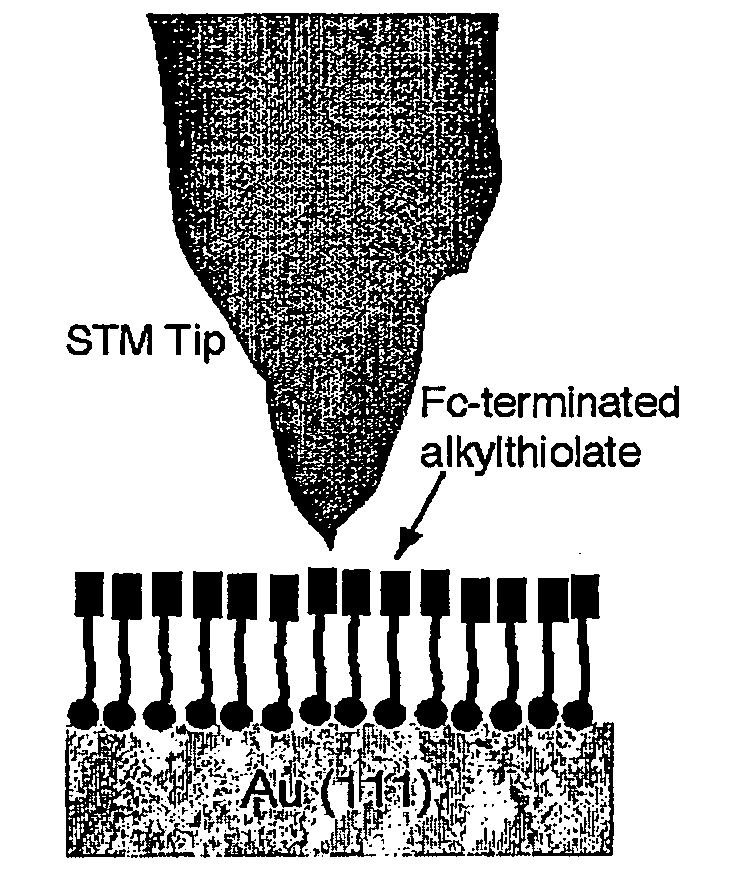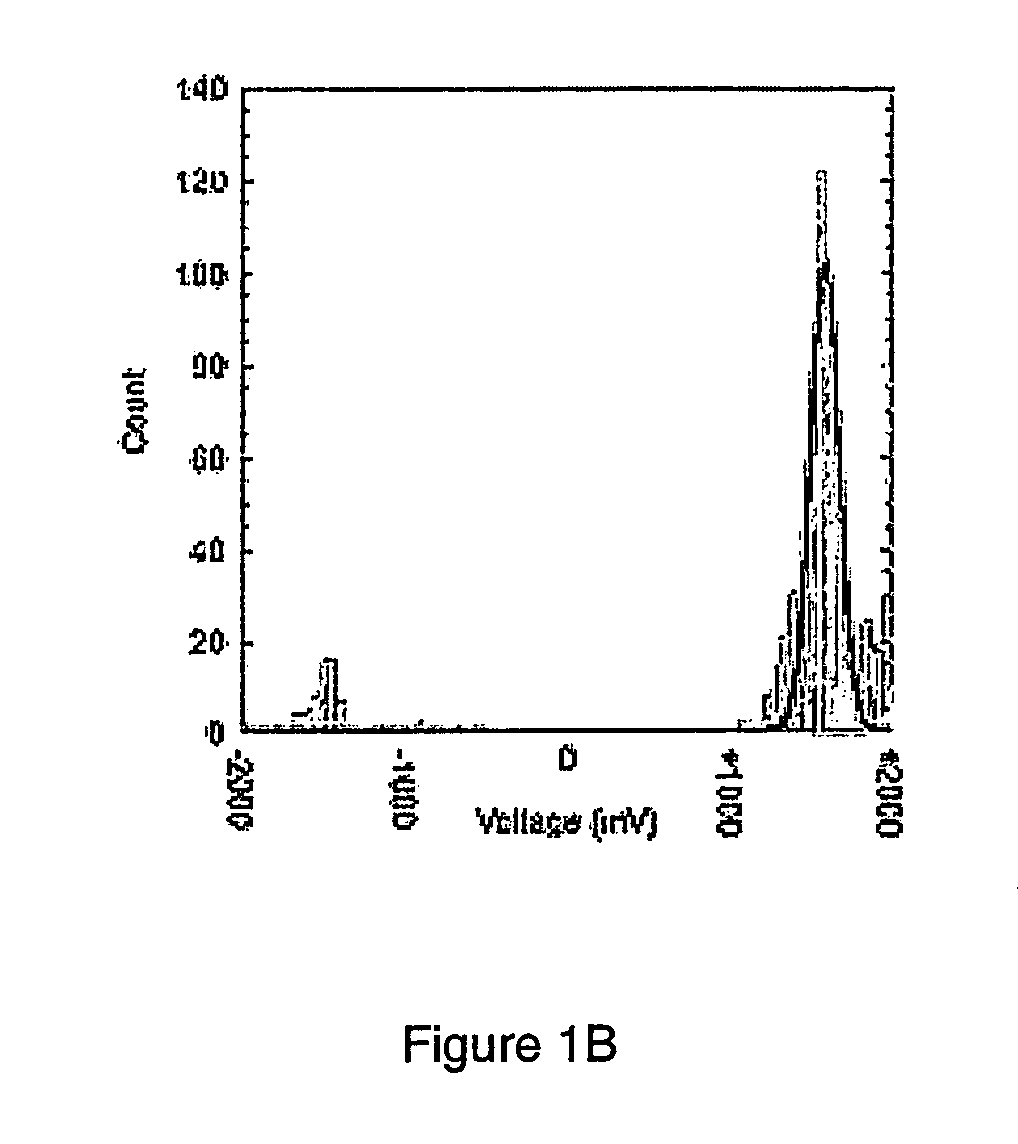Use of electroactive monolayers in generating negative differential resistance behaviors and devices employing the same
a technology of electroactive monolayers and negative differential resistance, which is applied in the direction of solid-state devices, nanoinformatics, instruments, etc., can solve the problem that there is no known sound mechanistic basis for how ndr is generated in molecular systems, and achieve the effect of negative differential resistance and negative differential resistan
- Summary
- Abstract
- Description
- Claims
- Application Information
AI Technical Summary
Benefits of technology
Problems solved by technology
Method used
Image
Examples
example 1
Laboratory Example 1
SAMs Containing Redox-Active Head Groups Display Molecular NDR
[0190] It was hypothesized that SAMs containing redox-active head groups could display molecular NDR. To test this, a ferrocenyl-undecanethiolate (Fc-C11S—) SAM (Uosaki et al., (1991) Langmuir7: 1510-1514) was prepared on a Au(111) surface (Table 1 provides the structures of the molecules employed in Laboratory Examples 1-4). Using scanning tunneling microscopy (STM) under conditions of low setpoint current, a set of current-voltage (I-V) curves was obtained using continuous imaging tunneling spectroscopy (CITS). In this procedure, 1024 I-V curves were collected on a region of the surface. Although many investigations of molecular I-V behavior are performed under high vacuum conditions, these data were taken under an inert fluid (dodecane). The reasons for this experimental condition will be made clear when patterning experiments are described below. FIG. 1A shows a typical I-V curve from the CITS dat...
example 2
Laboratory Example 2
Evaluation of Resonant Tunneling
[0197] Prior to the disclosure of the present invention presented herein, little experimental evidence has been available that differentiates resonant tunneling as the mechanism of NDR from that of adventitious oxidation / reduction of the electroactive species in the junction. In an attempt to rule out an electrochemical mechanism, I-V curves were collected at different voltage sweep rates varying well over a decade (six values from 2.3 to 60.0 V / s). In all cases, the magnitude and position of the NDR response were similar to those data shown in FIGS. 1A and 1B. If an electrochemical mechanism were operative (e.g., that found in thin layer voltammetry), one would expect to see an influence on the I-V behavior as this parameter was varied. This was not observed.
[0198] Assuming a resonant tunneling mechanism, the I-V response of a nonelectroactive SAM (in the present Laboratory Example, a dodecanethiolate SAM, C12S-SAM, i.e. a SAM p...
example 3
Laboratory Example 3
Other Electroactive SAMs
[0203] It was hypothesized that other electroactive SAMs would display an I-V response similar to that of the Fc-C11S-SAM. To this end, scanning tunneling lithography was employed to place Fc-C11S-SAM and a phenoxygalvinol-substituted hexanethiol (Gal-C6S-SAM) (Shultz & Tew, (1994) J. Org. Chem.59: 6159-6160; Sagara et al., (1998) Langmuir 14: 3682-3690) adjacent to one another in a background of C12S-SAM. FIGS. 5A-5C shows the results of one series of patterning of both the Fc-C11S-SAM (as the letters “Fc”) and the Gal-C6S-SAM (as the letters “Gal”) into a C12S-SAM. The increased tunneling current through the electroactive SAM at biases near the position of NDR was observed as an increase in apparent height difference between an electroactive and a nonelectroactive SAM. At low bias (115 mV, FIG. 5A), the apparent height difference between the three SAM regions was extremely small, and the patterns of the electroactive SAMs were almost in...
PUM
| Property | Measurement | Unit |
|---|---|---|
| scan size | aaaaa | aaaaa |
| bias voltage | aaaaa | aaaaa |
| size | aaaaa | aaaaa |
Abstract
Description
Claims
Application Information
 Login to View More
Login to View More - R&D
- Intellectual Property
- Life Sciences
- Materials
- Tech Scout
- Unparalleled Data Quality
- Higher Quality Content
- 60% Fewer Hallucinations
Browse by: Latest US Patents, China's latest patents, Technical Efficacy Thesaurus, Application Domain, Technology Topic, Popular Technical Reports.
© 2025 PatSnap. All rights reserved.Legal|Privacy policy|Modern Slavery Act Transparency Statement|Sitemap|About US| Contact US: help@patsnap.com



